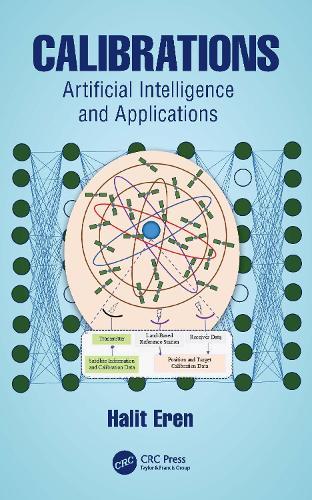Overview
Modern human societies rely on measurements. Measurements are essential for understanding and describing the world around us and the overall nature. Ensuring measurement accuracy, traceability, and consistency is important in scientific research, trade, manufacturing, health and medicine, and the everyday running of modern societies. One of the most essential components of measurement is the calibration. This book walks the reader through fundamental principles of calibrations, traditional calibration methods, the related standards, and procedures, as well as the fast‑developing and diverse range of artificial intelligence (AI)‑based calibration methods. Calibration complies with strict regulations and legislation by governments, relevant authorities, and concerned parties. New and effective calibration techniques are evolving in parallel to the traditional methods. As explained here, new techniques that are based on AI offer instantaneous, continuous calibrations in standalone devices as well as in complex and large systems. Continuous and large‑scale calibrations are possible due to the new generation of computers and advanced digital systems, intelligent devices and sensors, communication networks, advanced mathematical methods, and the newly developed areas such as cyber‑physical concepts. This book highlights that advanced technological and AI methods are applied for the calibration of distributed cyber‑physical and data‑driven applications. AI‑based calibrations find applications in large‑scale systems, where traditional methods have become almost impossible to implement or can be costly. Typical examples are Internet of Things (IoTs), self‑driving vehicles, intelligent transportation systems, unmanned aerial vehicles, drones and drone clusters, industrial processes, communication networks, health and medicine, environmental monitoring, pollution control, remote and inaccessible devices, smart cities, space explorations, management systems, economics, and finance.
Full Product Details
Author: Halit Eren (Curtin University, Bentley, Australia)
Publisher: Taylor & Francis Ltd
Imprint: CRC Press
Weight: 0.470kg
ISBN: 9781032968070
ISBN 10: 1032968079
Pages: 156
Publication Date: 18 November 2025
Audience:
Professional and scholarly
,
Professional & Vocational
Format: Hardback
Publisher's Status: Forthcoming
Availability: Not yet available

This item is yet to be released. You can pre-order this item and we will dispatch it to you upon its release.
Author Information
Halit Eren received a BEng, 1973, and an MEng, 1975, in electrical engineering and a PhD in control engineering, 1979, all from the University of Sheffield, UK. He obtained an MBA from Curtin University in 1999, majoring in international management. He worked in Etibank as a project engineer on automation and instrumentation in copper plants. He served as a lecturer at Hacettepe University‑Beytepe Campus, 1980–1981, and as an assistant professor at the Middle East Technical University‑Gaziantep Campus, 1982. He worked at Curtin University between 1983 and 2015, first at the School of Mines, Kargoorlie, and then at the School of Electrical Engineering, Bentley Campus, Perth, Western Australia. He served as an associate professor at Polytechnic University, Hong Kong, and as a visiting professor at the University of Wisconsin‑Madison, USA. His academic duties involved research and teaching in control systems, digital transmission and interface design, process control and instrumentation, and engineering management. He has attracted numerous research grants from the government and industry, and has also acted as a consultant for many private and governmental organizations. He supervised and graduated PhD and master’s degree students. He served as the head of the Department of Electronics and Electrical Engineering at Curtin University.



